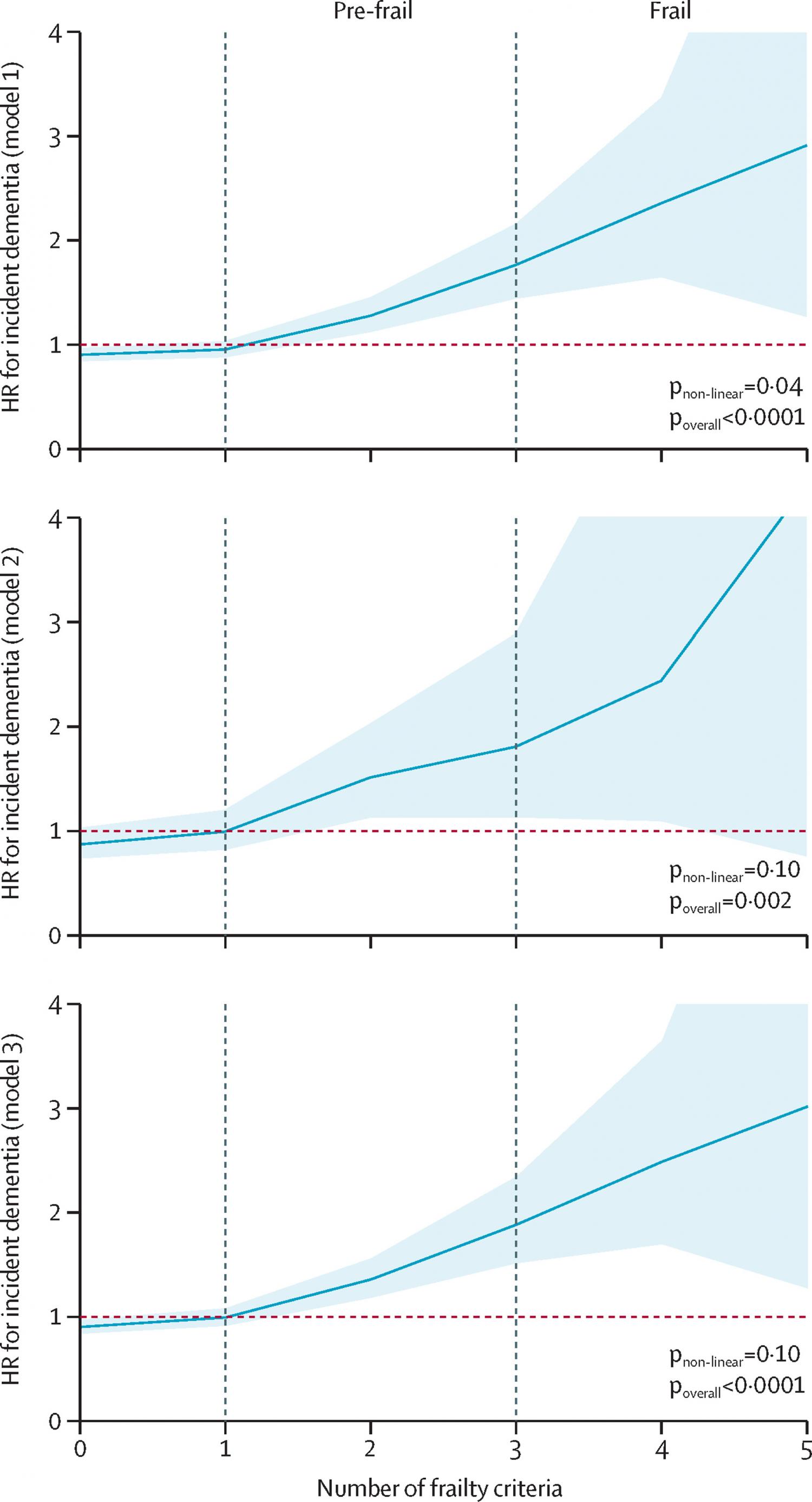
Background: Dementia is associated with a high burden of dependency and disability. Physical frailty (hereafter referred to as frailty) is a multisystem dysregulation that has been identified as a risk factor for dementia. The aim of this study was to examine the association of frailty and its individual components with all-cause dementia incidence in a cohort of UK adults. Methods: Participants in UK Biobank with data available for dementia incidence and without any form of dementia at baseline were included in this prospective study. Frailty was defined using a modified version of the frailty phenotype based on five individual components (weight loss, tiredness, physical activity, gait speed, and grip strength), with participants classified as pre-frail if they fulfilled one or two criteria or frail if they fulfilled three or more. Associations between frailty and dementia incidence were investigated using Cox proportional hazard models adjusted for sociodemographic factors, lifestyle factors, and morbidity count. The population attributable fraction was also estimated. Findings: Of 502 535 participants in UK Biobank, 143 215 met the inclusion criteria and were included in our analyses. 68 500 (47·8%) of the participants were pre-frail and 5565 (3·9%) were frail. During a median follow-up period of 5·4 years, 726 individuals developed dementia. Compared with non-frail individuals, the risk of dementia incidence was increased for individuals with pre-frailty (hazard ratio 1·21 [95% CI 1·04–1·42]) and frailty (1·98 [1·47–2·67]) in the fully adjusted model. Of the five components used to define frailty, weight loss (1·31 [1·09–1·58]), tiredness (1·48 [1·18–1·86]), low grip strength (1·38 [1·17–1·63]), and slow gait speed (1·55 [1·22–1·96]) were independently associated with incident dementia. Based on population attributable fraction analyses, in the study sample, pre-frailty and frailty accounted for 9·9% and 8·6% of dementia cases, respectively. Interpretation: Individuals with pre-frailty and frailty were at a higher risk of dementia incidence even after adjusting for a wide range of confounding factors. Early detection and interventions for frailty could translate into prevention or delayed onset of dementia. Funding: None.
